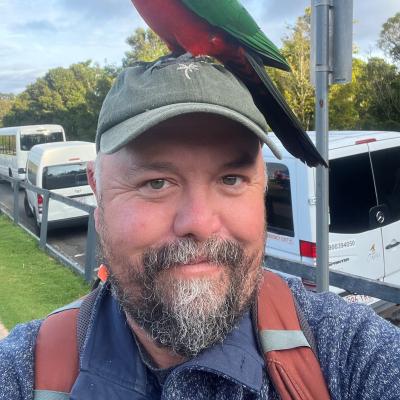Jon Dunn on the conclusion of his, Gavin Bieber and Rich Hoyer's tour to Alaska: Gambell and Nome
Most of us arrived at Gambell on a foggy, rainy afternoon (Rich Hoyer, our cook, and four others arrived, thankfully, very late the same day) and we were treated to fine views of a Wood Sandpiper that had been present for a few days.
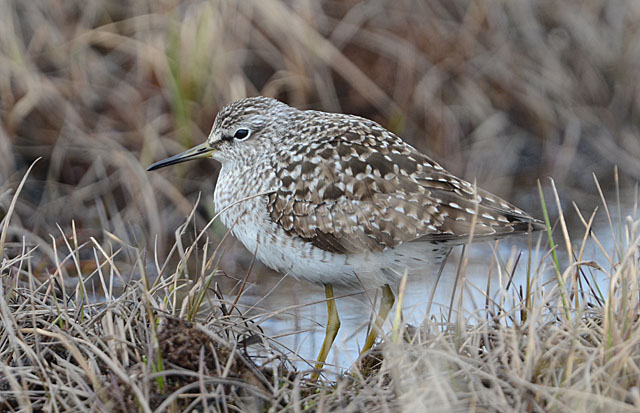
Wood Sandpiper
After more rain the winds turned to the northeast and blew very strongly for several day. Such winds are typically bad for passerine migration and they made general birding difficult but even so there were glorious moments: a male McKay's Bunting that turned up at the Northwest Point and later at the south end of the Troutman Lake was a real stunner and we were in the right place at the right time when a Tundra Bean-Goose flew over.
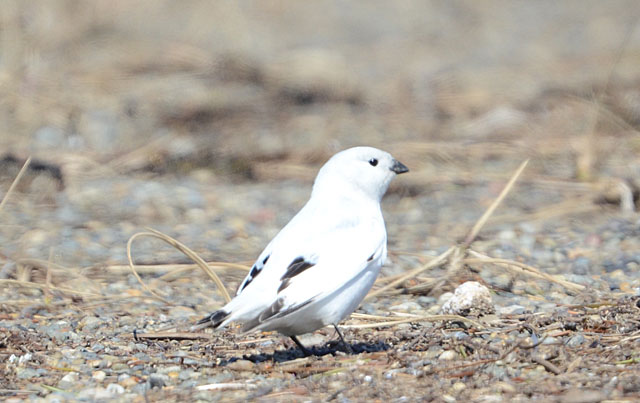
McKay's Bunting
At Gambell regardless of weather or wind direction there is always the show at the Point and from a wind sheltered spot we enjoyed a nearly continuous parade of water birds. Many of these are auklets (three species) and puffins, but we had three species of eiders, including lots of Steller's, several Slaty-backed and Sabine's Gulls, Arctic and Yellow-billed Loons, Emperor Geese, and both Asian stejnegeri and American deglandi White-winged Scoters, surprisingly in almost equal numbers given that this is the only location in North America where this distinctive Asian subspecies (or species) has been regularly noted. We also detected three Dovekies on the seabird nesting cliffs east of town.
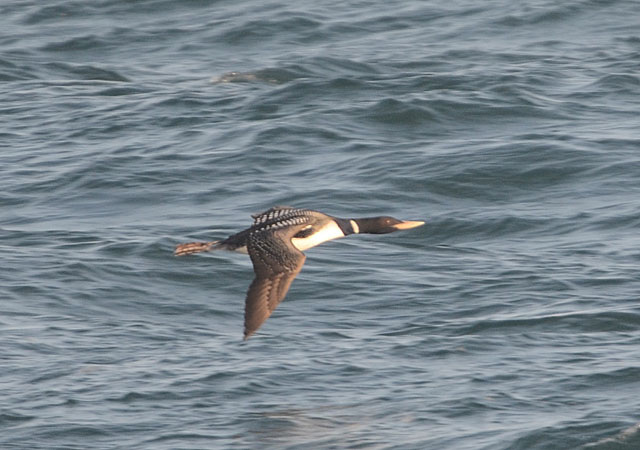
Yellow-billed Loon
Once the winds finally died, some notable migrants appeared including Lesser Sand-Plover, Terek Sandpiper, two Red-necked Stints, Common House-Martin (Gavin only, it flew over our lodge!), Eurasian Skylark, and a male Northern Wheatear. Territorial Common Ringed Plovers finally arrived on 4 June.
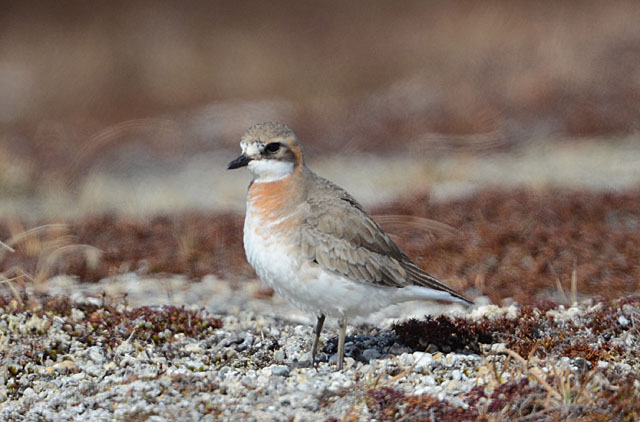
Lesser Sand-Plover
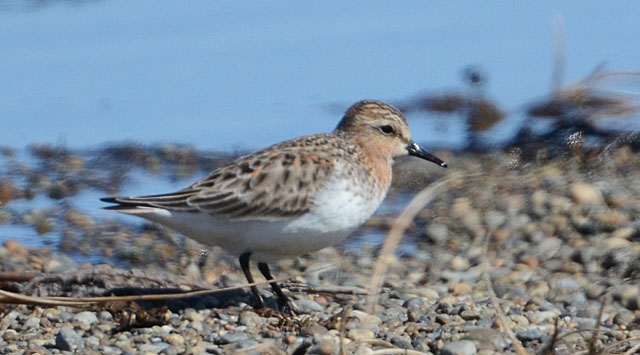
Red-necked Stint
Certainly the two most notable birds were a "Siberian" Chiffchaff, the third or fourth North American record, found late on the 5th by Alex and Ethan Goodman, and a Dusky Thrush also found late on the 5th by Rich Hoyer. The thrush remrkably showed many (maybe all) of the characters of the nominate race, the "Nauman's Thrush," a form not yet documented with photos from North America. These images will be examined by experts to see if this might have been a pure "Nauman's" or a hybrid with Dusky.
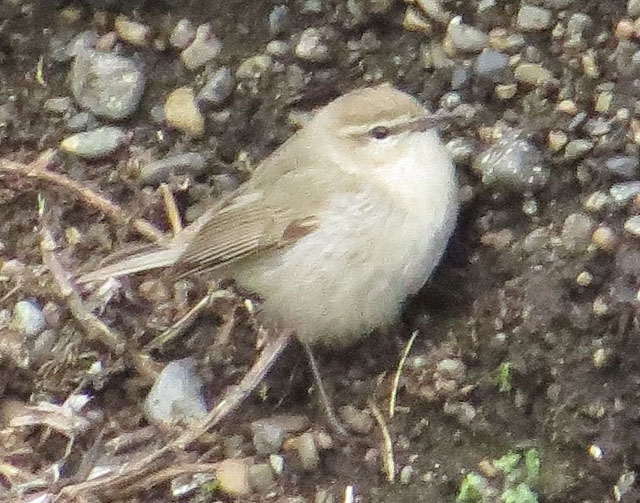
"Siberian" Chiffchaff
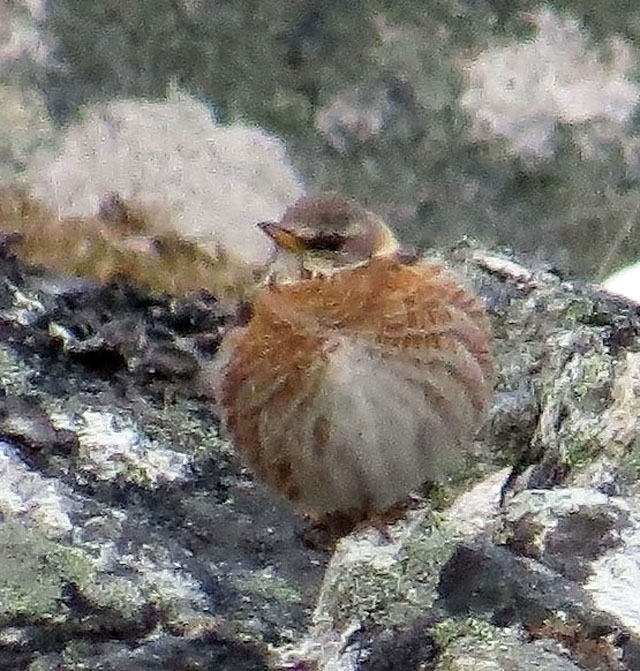
Dusky (Nauman's) Thrush
We should mention that there were interesting migrants from North America as well; an Orange-crowned Warbler (Paul Lehman says it is a 2nd spring record for Gambell), a male Yellow-rumped ("Myrtle" Warbler), a White-crowned Sparrow, and a Savannah Sparrow. We note too that there was absolutely no sea ice and very little snow at Gambell, a result of a mild winter and a steadily warming climate.
In Nome we found all of the regular species we hoped to see except for Arctic Warbler which apparently had not yet arrived. Species we did see included Bristle-thighed Curlews and Bar-tailed Godwits, Aleutian Terns, nesting Gyrfalcons and Bluethroats. More uncommon species included Surfbird and Sanderling and two Northern Shrikes. A Barn Swallow was a real surprise as was an immature Ivory Gull, a species missed at Gambell, but probably the most enjoyed surprise, and for the second consecutive year, was a male Spectacled Eider, a species we had missed at Gambell.
We give thanks to Tom Lambertson for sharing his fine images of the Wood Sandpiper, McKay's Bunting, Yellow-billed Loon, Lesser Sand-Plover and Red-necked Stint, and to Rich Hoyer for his images of the "Siberian Chiffchaff and Dusky (Nauman's) Thrush.
